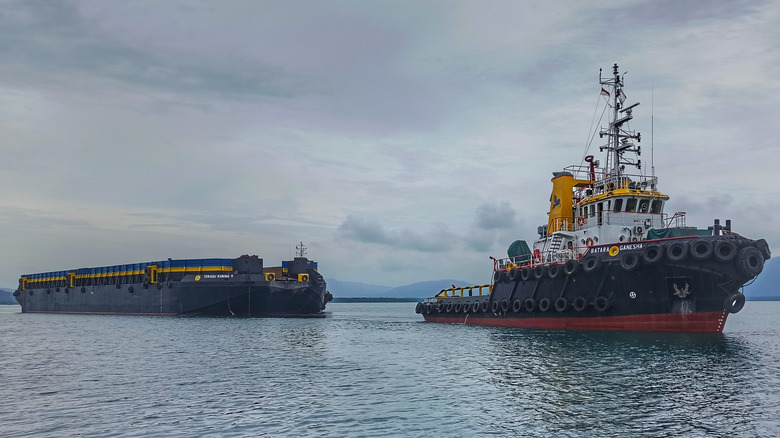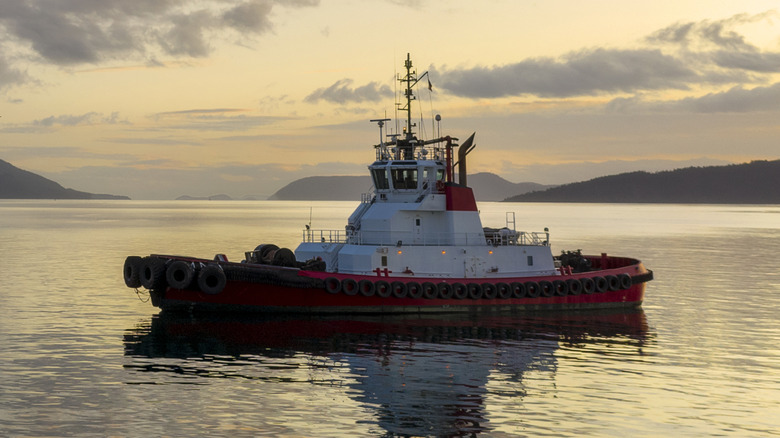How Fast Can A Tugboat Go? (And Why They're So Slow)
Tugboats are built to be strong enough to pull massive ships, not for speed. Unlike cargo ships or speedboats, which are designed for high velocities, tugboats serve a different purpose: assisting and towing much larger vessels. These compact but powerful boats operate in harbors, rivers, and open seas, guiding ships through tight spaces and moving barges or disabled vessels. Their primary function requires immense pulling force, and to generate that force, tugboats are equipped with high-torque engines that focus on strength instead of acceleration.
Because of this, even the most modern tugboats remain significantly slower than commercial or recreational boats. While some tugboats have been built for higher speeds, they are the exception rather than the rule, and most models fall within a specific range of lower speeds. Let's take a look at just how fast these things can go, as well as the reasons for them being so sluggish when they're cutting through the water.
Typical speeds of tugboats
The speed of a tugboat depends on its design and purpose. Traditional harbor tugboats, which assist ships in docking and undocking, typically operate at speeds up to 13.5 knots (15 mph). Ocean-going tugboats, such as the Maritime Commission's V4 tug, which are used for towing ships over long distances, can reach slightly higher speeds of approximately 14 knots (16 mph). However, even these faster models are nowhere near the speeds of commercial vessels, which can cruise at 16 to 24 knots (18 to 29 mph).
One reason for the limited speed is tugboats' design. They sit deep in the water because of their heavy weight, and they have a hull that displaces water rather than pushing it aside, all of which makes them incredibly stable and hard to tip over. But that same weight and shape also create more resistance as they move through the water. Think of it like trying to push a bathtub through a pool versus a kayak — the heavier, bulkier shape doesn't glide as easily.
Additionally, the propellers on tugboats are built to generate thrust rather than speed, often featuring specialized azimuth thrusters — special propellers that can rotate 360 degrees. These give tugboats incredible maneuverability, letting them move in any direction, spin on the spot, and position themselves precisely.
Why are tugboats so slow?
A tugboat's power is measured in bollard pull, which indicates how much force it can exert while pulling a stationary object. For example, a typical tugboat has a bollard pull of 500 to 600 kilonewtons (approximately 50 to 60 tons), while large ocean-going tugboats can go up to 477 metric tons.
Another factor is fuel efficiency. Tugboats operate for long hours, often idling or moving at slow speeds while waiting for their next job. High-speed travel would increase fuel consumption, making operations more expensive and less efficient. By maintaining lower speeds, tugboats can optimize fuel use and reduce costs.
Maneuverability is also a key reason for the low speeds. Tugboats need to be able to make precise movements in tight spaces, such as harbors and shipyards. If they were designed for speed, they would be harder to control, reducing their effectiveness in assisting the biggest ships the world has ever seen (and joyfully spraying water while towing them).
Tugboats are built to prioritize power, stability, and maneuverability over speed. Their relatively slow pace is a trade-off that lets them perform their primary function — towing and assisting much larger ships — effectively.


